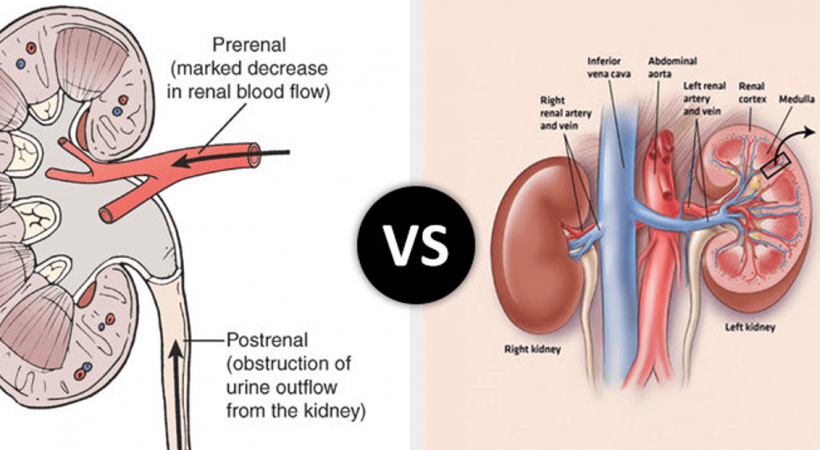
Chronic Renal Failure (CRF): A Comprehensive Guide to Treatment
Chronic Renal Failure (CRF): A Comprehensive Guide to Treatment and Management
Chronic Renal Failure (CRF), now more commonly known as Chronic Kidney Disease (CRF), is a progressive and irreversible loss of kidney function over months or years. Unlike acute kidney injury, CRF is a long-term condition, and its treatment focuses not on curing the disease, but on slowing its progression, managing symptoms, preventing complications, and preparing for end-stage renal disease (ESRD) if and when it occurs. The treatment plan is multifaceted and tailored to the individual’s stage of CRF overall health, and specific symptoms.
The Cornerstones of CRF Management
The management of CRF rests on several key pillars that work in concert to preserve kidney function for as long as possible.
1. Treating the Underlying Cause:
The first step is to identify and manage the condition that is damaging the kidneys. The two most common causes are:
- Diabetes: Meticulous control of blood sugar levels through diet, exercise, and medication is paramount to prevent further damage to the kidney’s delicate filtering units.
- High Blood Pressure (Hypertension): Controlling blood pressure is arguably the most critical factor in slowing the progression of CRF. The target blood pressure for most CKD patients is typically lower than for the general population.
2. Medications to Slow Progression and Manage Symptoms:
A range of medications is used to protect the kidneys and manage the consequences of declining function.
- ACE Inhibitors and ARBs: These are first-line drugs for CKD patients, especially those with diabetes and protein in the urine (proteinuria). They not only lower blood pressure but also reduce pressure within the kidney’s filters, thereby slowing disease progression.
- SGLT2 Inhibitors: A newer class of diabetes drugs that have shown remarkable benefits in protecting kidney function and reducing cardiovascular risk in CKD patients, even in those without diabetes.
- Diuretics: Often called “water pills,” these help the body eliminate excess fluid and salt, which can combat swelling (edema) and high blood pressure.
- Medications to Correct Anemia: Healthy kidneys produce a hormone called erythropoietin (EPO) that stimulates red blood cell production. In CKD, EPO levels drop, leading to anemia. Treatment may involve synthetic EPO injections and iron supplements.
- Medications for Mineral and Bone Disorder (CKD-MBD): As kidneys fail, they struggle to balance calcium and phosphorus. This can lead to weak bones. Phosphate binders (taken with meals) prevent phosphorus from being absorbed from food, and Vitamin D supplements help maintain calcium balance.
3. Dietary and Lifestyle Modifications:
Dietary changes are a non-negotiable part of CKD management, and they evolve as the disease progresses.
- Sodium (Salt) Restriction: Essential for controlling blood pressure and preventing fluid retention.
- Protein Restriction: Reducing protein intake can lessen the waste products in the blood (like urea), easing the burden on the remaining functional kidney tissue. However, the degree of restriction is highly individualized.
- Potassium and Phosphorus Restriction: In advanced CKD, the kidneys cannot remove these minerals effectively. High levels can be dangerous for the heart. Patients are advised to limit foods high in potassium (bananas, oranges, potatoes) and phosphorus (dairy products, nuts, processed foods).
- Fluid Restriction: In later stages, if the body starts retaining significant fluid, patients may need to limit their daily fluid intake.
- Lifestyle Changes: This includes smoking cessation, maintaining a healthy weight, and regular physical activity.
Preparing for Kidney Failure: Renal Replacement Therapy
When CKD progresses to End-Stage Renal Disease (ESRD), where the kidneys are functioning at less than 15% of their capacity, life-sustaining treatment becomes necessary. This is known as Renal Replacement Therapy (RRT), and there are three main options:
- Dialysis: This treatment artificially filters waste and extra fluid from the blood.
- Hemodialysis (HD): Blood is circulated outside the body through a machine (a dialyzer) that acts as an artificial kidney. This is typically done at a dialysis center three times a week, each session lasting about 4 hours.
- Peritoneal Dialysis (PD): The lining of the patient’s own abdomen (the peritoneum) acts as the filter. A special fluid (dialysate) is introduced into the abdomen through a catheter, where it absorbs wastes before being drained out. This can often be done at home, offering more flexibility.
- Kidney Transplant: This is the optimal treatment for many patients with ESRD. It involves surgically placing a healthy kidney from a living or deceased donor into the patient’s body. A successful transplant can free a person from dialysis and offer a better quality of life. However, it requires lifelong use of immunosuppressant medications to prevent the body from rejecting the new organ.
Conclusion: A Proactive Partnership
The treatment of Chronic Renal Failure (CRF) is a lifelong journey that requires a proactive partnership between the patient, their nephrologist (kidney specialist), dietitian, and other healthcare providers. While the diagnosis can be daunting, a comprehensive and disciplined approach to treatment can significantly slow the disease’s progression, effectively manage symptoms, and maintain a good quality of life for years. The ultimate goals are to delay the need for dialysis or transplant for as long as possible and to ensure a smooth transition to these therapies when they become medically necessary.
